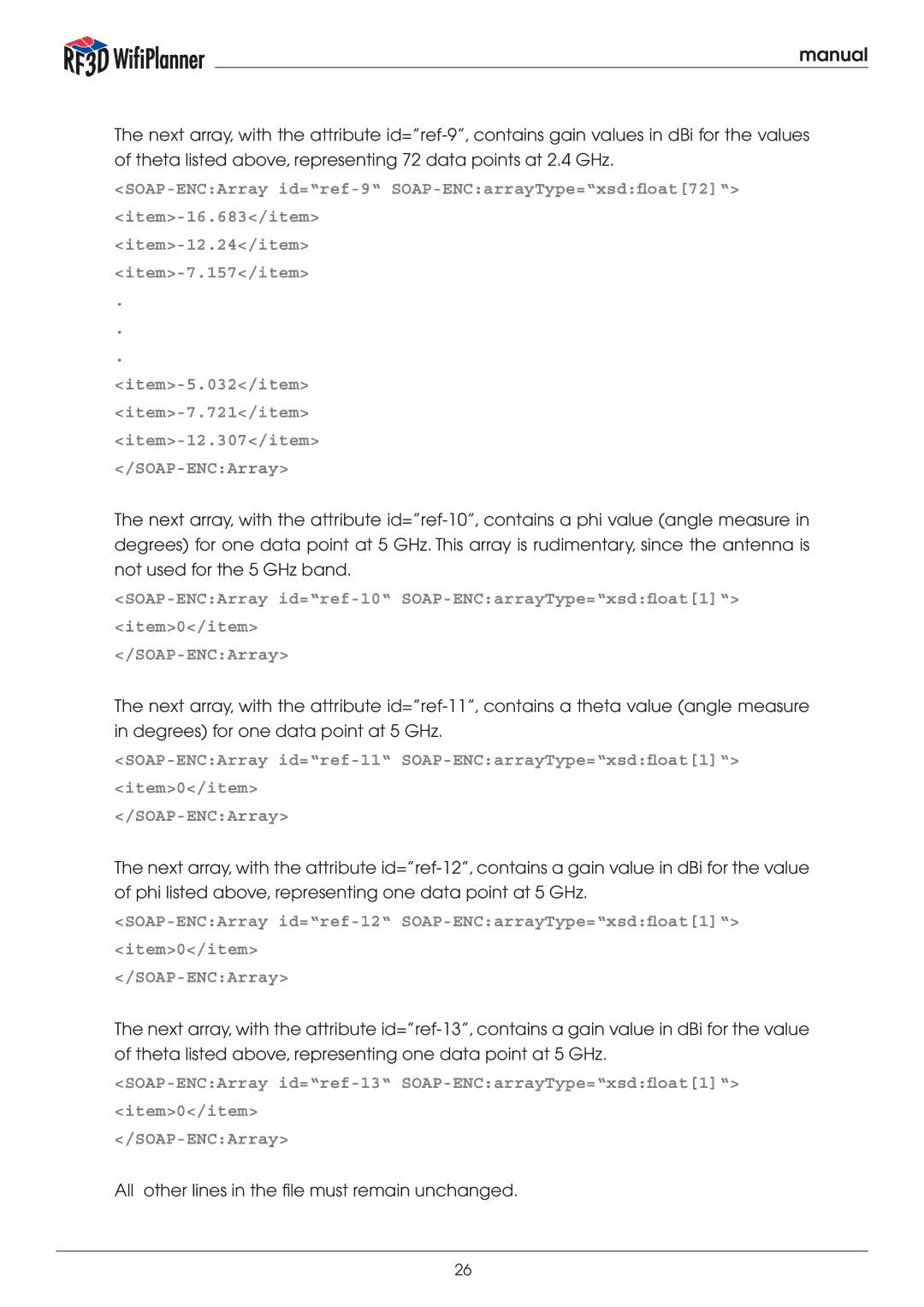manual
The next array, with the attribute id=”ref-9”, contains gain values in dBi for the values of theta listed above, representing 72 data points at 2.4 GHz.
<SOAP-ENC:Array id=“ref-9“ SOAP-ENC:arrayType=“xsd:float[72]“> <item>-16.683</item>
<item>-12.24</item> <item>-7.157</item>
.
.
.
<item>-5.032</item> <item>-7.721</item> <item>-12.307</item> </SOAP-ENC:Array>
The next array, with the attribute id=”ref-10”, contains a phi value (angle measure in degrees) for one data point at 5 GHz. This array is rudimentary, since the antenna is not used for the 5 GHz band.
<SOAP-ENC:Array id=“ref-10“ SOAP-ENC:arrayType=“xsd:float[1]“>
<item>0</item>
</SOAP-ENC:Array>
The next array, with the attribute id=”ref-11”, contains a theta value (angle measure in degrees) for one data point at 5 GHz.
<SOAP-ENC:Array id=“ref-11“ SOAP-ENC:arrayType=“xsd:float[1]“>
<item>0</item>
</SOAP-ENC:Array>
The next array, with the attribute id=”ref-12”, contains a gain value in dBi for the value of phi listed above, representing one data point at 5 GHz.
<SOAP-ENC:Array id=“ref-12“ SOAP-ENC:arrayType=“xsd:float[1]“>
<item>0</item>
</SOAP-ENC:Array>
The next array, with the attribute id=”ref-13”, contains a gain value in dBi for the value of theta listed above, representing one data point at 5 GHz.
<SOAP-ENC:Array id=“ref-13“ SOAP-ENC:arrayType=“xsd:float[1]“>
<item>0</item>
</SOAP-ENC:Array>
All other lines in the file must remain unchanged.
26

